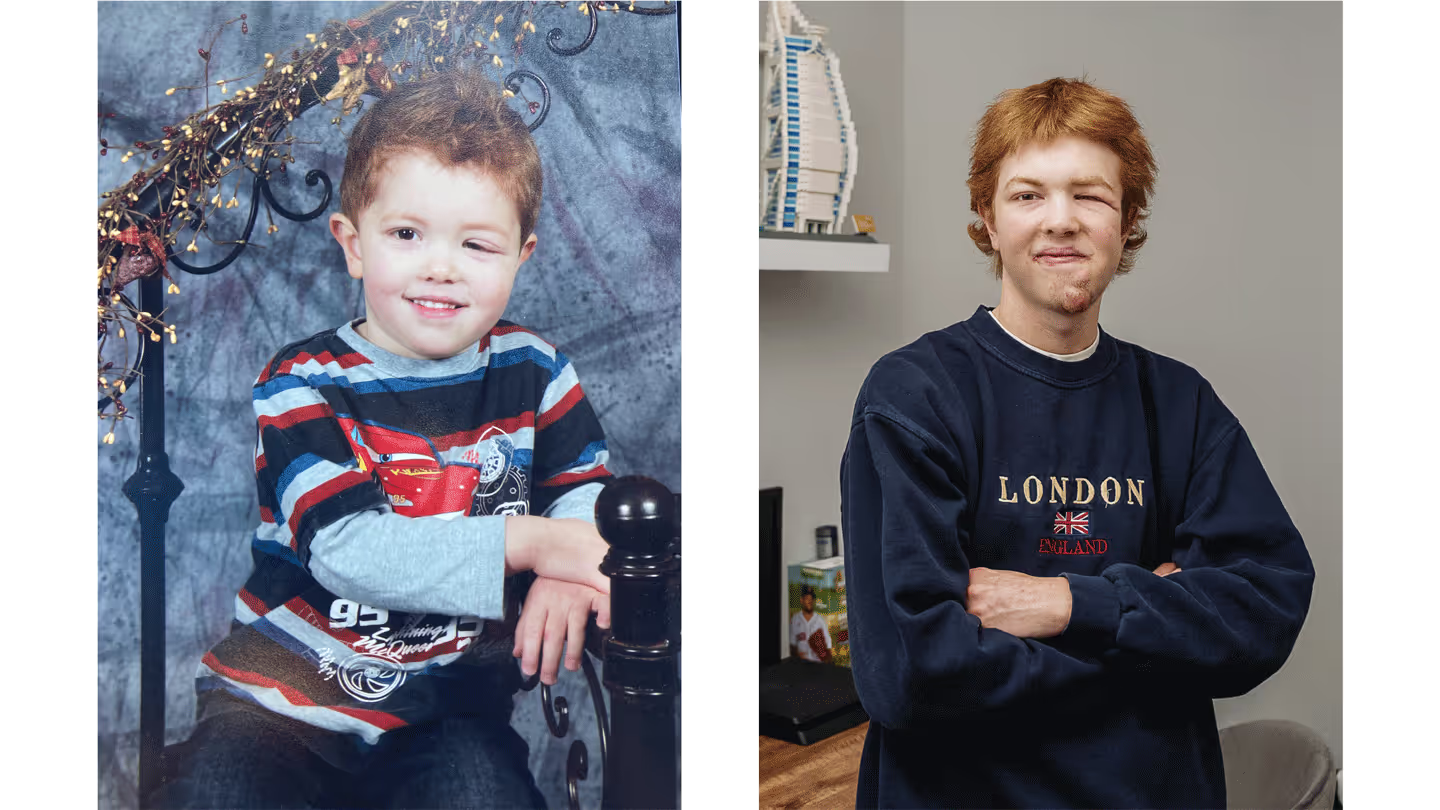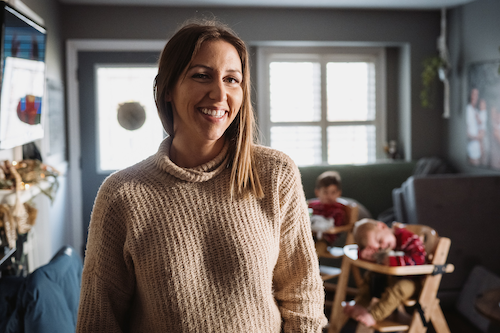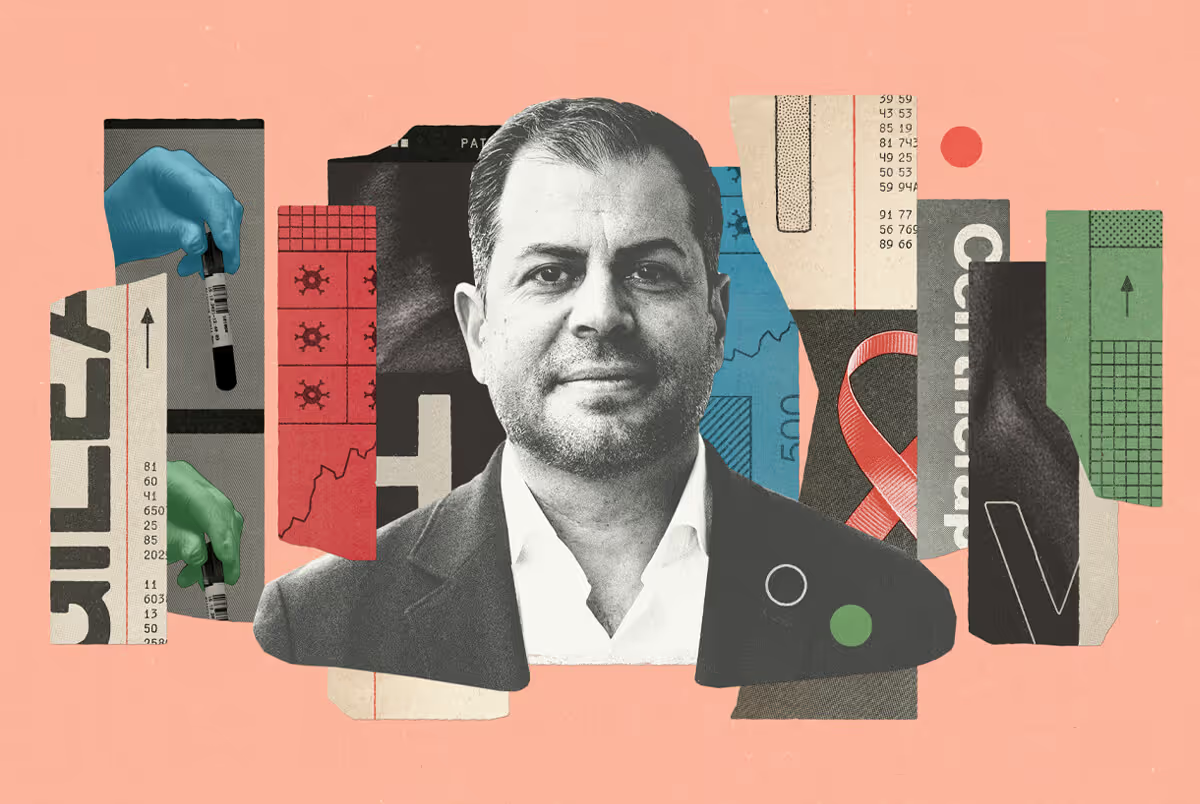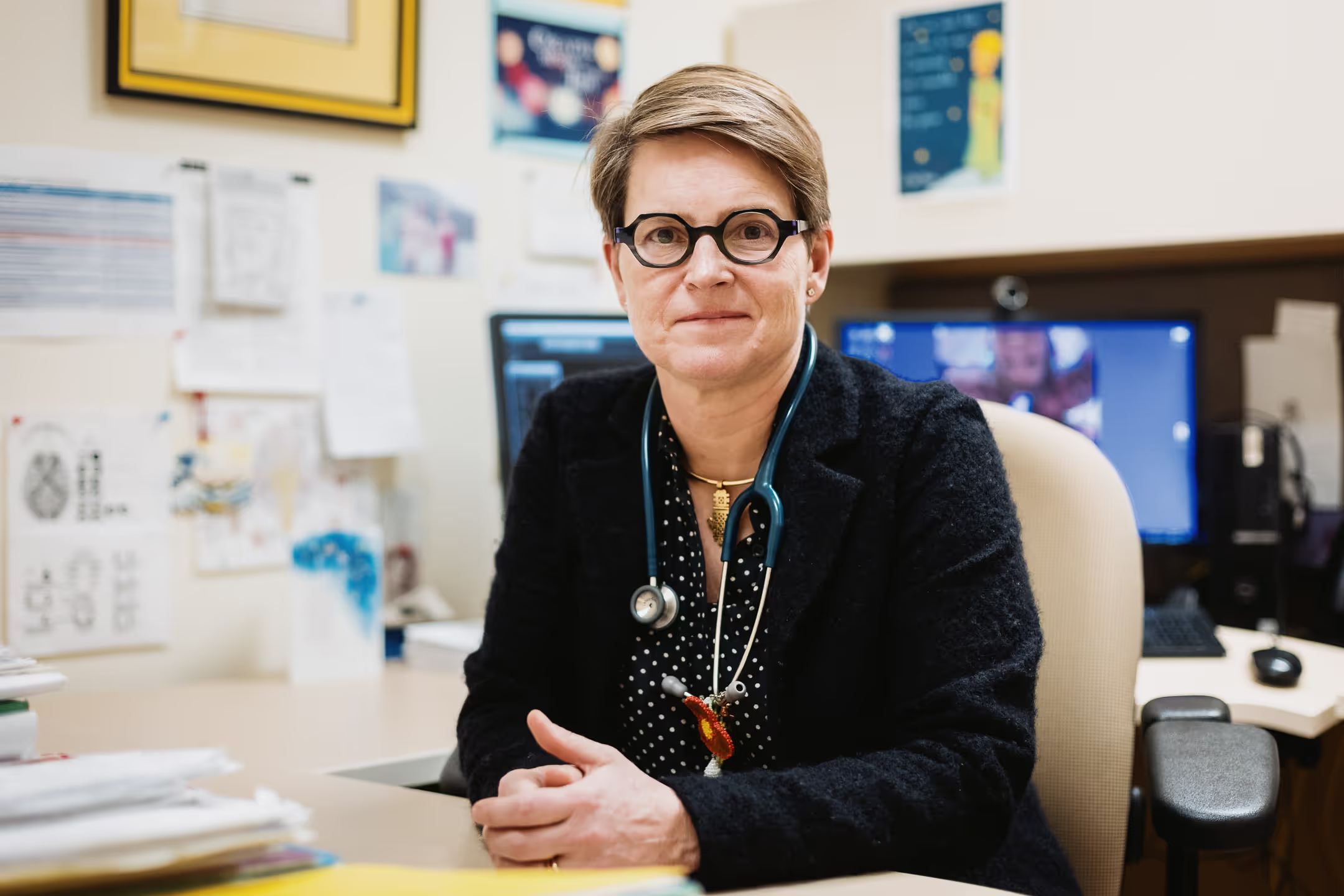MARIE-CLAUDE: I’m the mother of four children, two boys and two girls. My two sons and I have neurofibromatosis type 1 (NF1). Neurofibromatosis can take so many forms. I have almost no symptoms except for several café au lait spots and little nodules on my skin. But it has been a very different experience for my boys.
When Samuel, my oldest, was very small, I noticed that he had café au lait spots on his body. I told my family doctor that I had NF1 and that I thought that Samuel had it, too. The doctors did a genetic test and found that he did indeed have NF1. Later, Samuel started to develop scoliosis because of neurofibromas near his spine, and eventually needed an operation. Fortunately, he's doing so much better now in terms of the impact on his back. He’s able to drive, he works as a carpenter, and he has a great group of friends. Nathan, on the other hand, didn’t have any café au lait spots. However, when he was a year and a half old, I noticed a lump on his tongue. His doctors thought it was a cyst, but when they operated on it, they discovered that the lump was a plexiform neurofibroma.
NATHAN: I have neurofibromas on my eye and chin. When I was in primary school, I wore an eye patch for two years to strengthen the other eye, which was more affected by a neurofibroma. I was the only one in my class wearing a patch — I felt a little different. Nobody made fun of me, but they asked a lot of questions. I would simply answer their questions and explain that the neurofibromas don’t hurt me, and that was that. I have really great friends who support me and who I can talk to about it if I need to. The illness doesn’t affect my life that much — yes, my vision is blurry in one eye, but fortunately I can still drive.

MARIE-CLAUDE: Even though Nathan has visible neurofibromas on his face, he’s managed really well. He learned when he was quite young to embrace what makes him different. He has a great attitude. I also think that children are more tolerant than they were when I was in school. For Samuel, it was a bit more difficult because of the learning disabilities that can be associated with NF1. But for Nathan, that’s never been a problem. He has a lot of plans for the future, and I’m really proud of him.
NATHAN: Things are going well for me. I’m in Secondary 5 and I play defence on the school hockey team. I like to ski and hang out with my friends. After high school, I want to go to CÉGEP and maybe university, and eventually start my own business in the sports field. I’ve missed a lot of school for medical appointments, but my teachers have always helped me to catch up.
MARIE-CLAUDE: We sometimes have to drive an hour and a quarter to Québec City for Nathan’s specialist appointments, but they’ve become our special mother-son outings. We’ve been working closely with Nathan’s medical team on his NF1 treatment plan.
NATHAN: It took a while to find a treatment that works for my plexiform neurofibromas. Finally, for almost a year now, I’ve had a new treatment that’s working well. Some people can be afraid to try new things, but I told myself that we shouldn’t be afraid… and it paid off. I can see in the mirror that the neurofibromas are getting smaller, and that makes me very happy.
MARIE-CLAUDE: It can be hard to measure Nathan’s neurofibromas because they’re caught up in his nerves, but the one on his face has shrunk by 20 percent and the one near his eye isn’t as big as it used to be. We’re so happy for him. As a parent, it can be difficult when your child is diagnosed with an illness. You have to take care of yourself, too. Be sure to ask a lot of questions and try to reach out to other families impacted by the same illness. Building a support network is so helpful.

NATHAN: It’s really important to have my family around me. Especially when I was younger, they helped me to accept myself and my condition. I want to give hope to other young people who’ve been diagnosed and think that they’re going to have difficulties, physically or socially. Sure, there will be some people who might bully you because you look different, but how you react is up to you. You have to make your own decisions and forge ahead.
{{CTA}}
This initiative was made possible with support from Alexion AstraZeneca Rare Disease.
Living with neurofibromatosis type 1 comes with unique challenges. Staying connected to updated information will help focus your efforts on the best possible care. To learn more about NF1, visit Living with NF1 PN.




%20(1).jpg)






